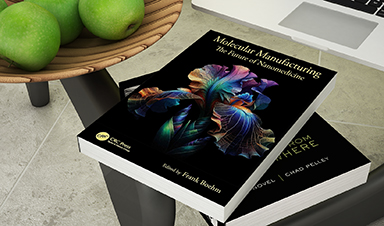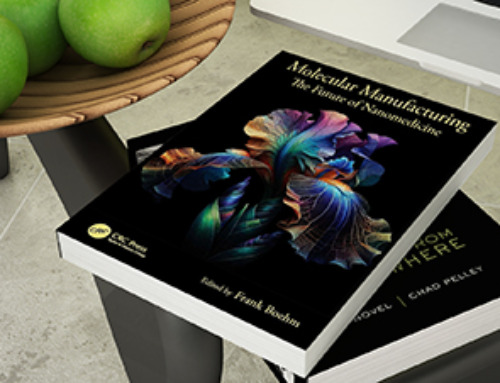Researchers have successfully extended the lifespan of time crystals, confirming a theoretical concept proposed by Frank Wilczek. This marks a significant step forward in quantum physics.
A team from TU Dortmund University recently succeeded in producing a highly durable time crystal that lived millions of times longer than could be shown in previous experiments. By doing so, they have corroborated an extremely interesting phenomenon that Nobel Prize laureate Frank Wilczek postulated around ten years ago and which had already found its way into science fiction movies. The results have now been published in Nature Physics.
Groundbreaking Achievement in Time Crystal Research
Crystals or, to be more precise, crystals in space, are periodic arrangements of atoms over large length scales. This arrangement gives crystals their fascinating appearance, with smooth facets like in gemstones.
As physics often treats space and time on one and the same level, for example in special relativity, Frank Wilczek, a physicist at the Massachusetts Institute of Technology (MIT) and winner of the Nobel Prize in Physics, postulated in 2012 that, in addition to crystals in space, there must also be crystals in time. For this to be the case, he said, one of their physical properties would have to spontaneously begin to change periodically in time, even though the system does not experience corresponding periodic interference.
What looks like a flame is the measurement of the new time crystal: Each point corresponds to an experimental value, resulting in different views of the periodic dynamics of the nuclear spin polarization of the time crystal. Credit: Alex Greilich/TU Dortmund University
Understanding Time Crystals
That such time crystals could be possible was the subject of controversial scientific debate for several years – but quick to arrive in the movie theater: For example, a time crystal played a central role in Marvel Studios' movie Avengers: Endgame (2019). From 2017 onwards, scientists have indeed succeeded on a handful of occasions in demonstrating a potential time crystal.
However, these were systems that – unlike Wilczek's original idea – are subjected to a temporal excitation with a specific periodicity, but then react with another period twice as long. A crystal that behaves periodically in time, although excitation is time-independent, i.e. constant, was only demonstrated in 2022 in a Bose-Einstein condensate. However, the crystal lived for just a few milliseconds.
A Leap in Time Crystal Longevity
The Dortmund physicists led by Dr. Alex Greilich have now designed a special crystal made of indium gallium arsenide, in which the nuclear spins act as a reservoir for the time crystal. The crystal is continuously illuminated so that a nuclear spin polarization forms through interaction with electron spins. And it is precisely this nuclear spin polarization that then spontaneously generates oscillations, equivalent to a time crystal.
The status of the experiments at the present time is that the crystal's lifetime is at least 40 minutes, which is ten million times longer than has been demonstrated to date, and it could potentially live far longer.
It is possible to vary the crystal's period over wide ranges by systematically changing the experimental conditions. However, it is also possible to move into areas where the crystal "melts," i.e. loses its periodicity. These areas are also interesting, as chaotic behavior, which can be maintained over long periods of time, is then manifested. This is the first time that scientists have been able to use theoretical tools to analyze the chaotic behavior of such systems.
Reference: "Robust continuous time crystal in an electron–nuclear spin system" by A. Greilich, N. E. Kopteva, A. N. Kamenskii, P. S. Sokolov, V. L. Korenev and M. Bayer, 24 January 2024, Nature Physics.
DOI: 10.1038/s41567-023-02351-6
News
Two New Books From Frank Boehm, NA Founder – To be Released Dec. 2025
Molecular Manufacturing: The Future of Nanomedicine This book explores the revolutionary potential of atomically precise manufacturing technologies to transform global healthcare, as well as practically every other sector across society. This forward-thinking volume examines [...]
What could the future of nanoscience look like?
Society has a lot to thank for nanoscience. From improved health monitoring to reducing the size of electronics, scientists’ ability to delve deeper and better understand chemistry at the nanoscale has opened up numerous [...]
Scientists Melt Cancer’s Hidden “Power Hubs” and Stop Tumor Growth
Researchers discovered that in a rare kidney cancer, RNA builds droplet-like hubs that act as growth control centers inside tumor cells. By engineering a molecular switch to dissolve these hubs, they were able to halt cancer [...]
Platelet-inspired nanoparticles could improve treatment of inflammatory diseases
Scientists have developed platelet-inspired nanoparticles that deliver anti-inflammatory drugs directly to brain-computer interface implants, doubling their effectiveness. Scientists have found a way to improve the performance of brain-computer interface (BCI) electrodes by delivering anti-inflammatory drugs directly [...]
After 150 years, a new chapter in cancer therapy is finally beginning
For decades, researchers have been looking for ways to destroy cancer cells in a targeted manner without further weakening the body. But for many patients whose immune system is severely impaired by chemotherapy or radiation, [...]
Older chemical libraries show promise for fighting resistant strains of COVID-19 virus
SARS‑CoV‑2, the virus that causes COVID-19, continues to mutate, with some newer strains becoming less responsive to current antiviral treatments like Paxlovid. Now, University of California San Diego scientists and an international team of [...]
Lower doses of immunotherapy for skin cancer give better results, study suggests
According to a new study, lower doses of approved immunotherapy for malignant melanoma can give better results against tumors, while reducing side effects. This is reported by researchers at Karolinska Institutet in the Journal of the National [...]
Researchers highlight five pathways through which microplastics can harm the brain
Microplastics could be fueling neurodegenerative diseases like Alzheimer's and Parkinson's, with a new study highlighting five ways microplastics can trigger inflammation and damage in the brain. More than 57 million people live with dementia, [...]
Tiny Metal Nanodots Obliterate Cancer Cells While Largely Sparing Healthy Tissue
Scientists have developed tiny metal-oxide particles that push cancer cells past their stress limits while sparing healthy tissue. An international team led by RMIT University has developed tiny particles called nanodots, crafted from a metallic compound, [...]
Gold Nanoclusters Could Supercharge Quantum Computers
Researchers found that gold “super atoms” can behave like the atoms in top-tier quantum systems—only far easier to scale. These tiny clusters can be customized at the molecular level, offering a powerful, tunable foundation [...]
A single shot of HPV vaccine may be enough to fight cervical cancer, study finds
WASHINGTON -- A single HPV vaccination appears just as effective as two doses at preventing the viral infection that causes cervical cancer, researchers reported Wednesday. HPV, or human papillomavirus, is very common and spread [...]
New technique overcomes technological barrier in 3D brain imaging
Scientists at the Swiss Light Source SLS have succeeded in mapping a piece of brain tissue in 3D at unprecedented resolution using X-rays, non-destructively. The breakthrough overcomes a long-standing technological barrier that had limited [...]
Scientists Uncover Hidden Blood Pattern in Long COVID
Researchers found persistent microclot and NET structures in Long COVID blood that may explain long-lasting symptoms. Researchers examining Long COVID have identified a structural connection between circulating microclots and neutrophil extracellular traps (NETs). The [...]
This Cellular Trick Helps Cancer Spread, but Could Also Stop It
Groups of normal cbiells can sense far into their surroundings, helping explain cancer cell migration. Understanding this ability could lead to new ways to limit tumor spread. The tale of the princess and the [...]
New mRNA therapy targets drug-resistant pneumonia
Bacteria that multiply on surfaces are a major headache in health care when they gain a foothold on, for example, implants or in catheters. Researchers at Chalmers University of Technology in Sweden have found [...]
Current Heart Health Guidelines Are Failing To Catch a Deadly Genetic Killer
New research reveals that standard screening misses most people with a common inherited cholesterol disorder. A Mayo Clinic study reports that current genetic screening guidelines overlook most people who have familial hypercholesterolemia, an inherited disorder that [...]






















